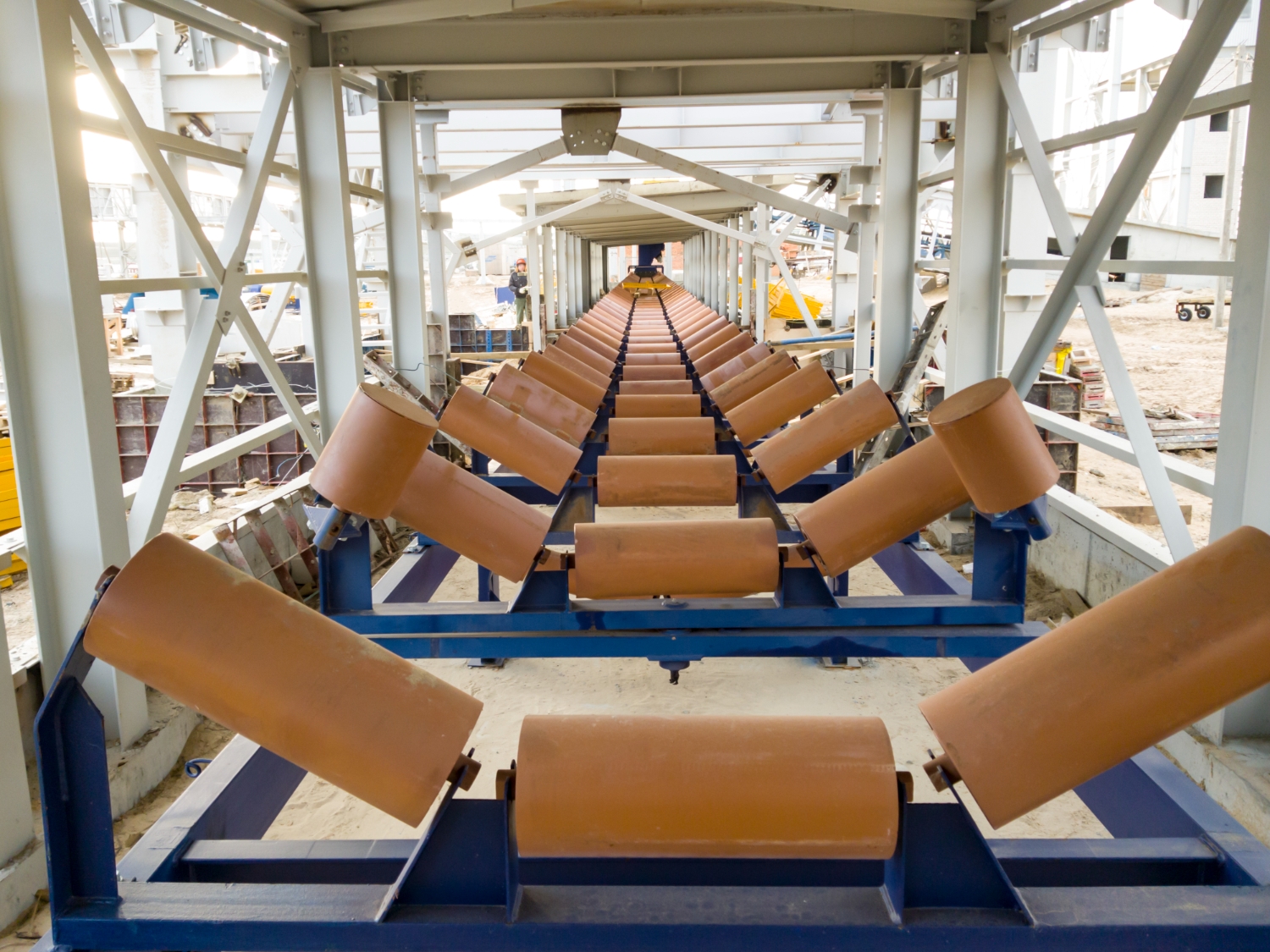
Factories don’t hum without reason. Every sound, every vibration, every flicker of a gauge tells a story. For decades, these signals went unnoticed until it was too late. A belt snapped. A motor overheated. A single failure could ripple through the entire system, bringing everything to a halt.
Now, those silent warnings have a voice. Predictive asset maintenance is rewriting the rules. It listens to the heartbeat of machines, interprets their quirks, and pinpoints risks long before a human eye could see them. This isn’t intuition—it’s science at its sharpest.
Using real-time data and machine learning algorithms, industries are breaking free from the old cycle of “run it until it breaks.” Instead, they’re taking control of downtime, costs, and even their environmental footprint. Think of it as giving your equipment a sixth sense—and your business an edge that competitors can’t touch.
But how does it all come together? And why is this shift transforming industries everywhere? Let’s dive into the mechanics of a future where failure is no longer an option.

What Is Predictive Asset Maintenance?
Machine management that uses predictive maintenance is like being able to see the future. It keeps an eye on equipment and figures out when it might break down by using data analytics, sensors, and algorithms. It’s like having a system that does more than merely watch—it learns, interprets, and acts.
This approach is fundamentally different from older maintenance strategies. Reactive maintenance waits for something to break, leaving companies scrambling to fix the issue. It’s costly, chaotic, and often results in unplanned downtime.
Preventive maintenance, on the other hand, works on a schedule. You service machines after a set number of hours or cycles, regardless of whether they need it. While it’s better than reactive strategies, it can waste resources, servicing equipment that’s functioning perfectly well.
Predictive maintenance is a game changer. By analysing real-time performance data, it uncovers subtle patterns—variations in temperature, vibration, or energy consumption—that hint at future issues. It allows businesses to target repairs precisely when and where they’re needed, saving time, money, and resources.
More than just repair timing, predictive maintenance helps organisations track asset lifecycle with incredible precision. Knowing exactly how long a machine will last means better planning, smarter investments, and fewer unexpected disruptions.
How Predictive Maintenance Improves Asset Management
The way businesses handle their equipment has changed a lot since predictive maintenance became a part of asset management systems. Companies no longer have to rely on guesswork or strict schedules. Instead, they can use data to make decisions that align maintenance with how things work in the real world. This leads to better planning, smarter use of resources, and a big drop in breakdowns that come out of the blue.
Reducing Downtime with Predictive Insights
Imagine a manufacturing plant where conveyor belts operate around the clock. Traditionally, operators either waited for a belt to snap (reactive) or replaced it after a set number of hours (preventive), whether it needed it or not. With predictive maintenance, sensors monitor metrics like tension and wear in real time. When a slight abnormality arises—something imperceptible to the naked eye—the system flags it. Maintenance teams intervene only when necessary, preventing costly, unplanned shutdowns.
One standout example comes from the aviation industry. Airlines use predictive asset monitoring to track the performance of jet engines. By analysing parameters like turbine vibration or fuel efficiency, predictive models can detect early signs of wear. This reduces unplanned groundings, ensuring flights stay on schedule and passenger trust remains intact.
Extending Equipment Life with Precision Monitoring
Additionally, predictive maintenance is essential for prolonging the life of assets. Think about a mining business that needs heavy-duty haul trucks. Without predictive maintenance, engines could get too hot or parts could wear out unevenly, which would cause them to break down too soon. By embedding IoT sensors into these vehicles, companies can receive alerts on critical conditions, such as excessive engine temperature or unusual tyre pressure. Maintenance can then be scheduled to address specific issues before they escalate.
Such systems work seamlessly when integrated into a modern asset tracking system. The centralised platform gathers data from many computers, looks for patterns, and gives useful information. Businesses need to replace fewer things, save money, and gain a clearer understanding of each asset’s status over time.

What is Predictive Asset Maintenance Analytics?
Proactive equipment management is based on predictive asset maintenance analytics. It turns raw data into insights that can be used, which helps businesses see failures coming and stop them before they happen.
Here’s how it works: machines equipped with sensors continuously gather data. This might include temperature, vibration levels, pressure, or energy consumption. This flood of information isn’t very helpful by itself. But with advanced analytics, patterns and oddities can be found, which can help you figure out how healthy the equipment is.
At its core, predictive analytics relies on algorithms and machine learning. These systems don’t just analyse past data; they learn from it. Over time, they can pinpoint subtle changes in performance that might signal wear and tear or an impending failure. For example, a slight increase in motor vibration might not seem critical, but analytics can correlate this with historical failure trends, alerting the maintenance team to investigate.
Another layer of sophistication comes from historical and real-time data comparisons. By blending these datasets, predictive analytics can create highly accurate forecasts. This makes it possible to schedule maintenance during low-impact times, avoiding costly downtime.
The Role of AI in Predictive Maintenance and Asset Management
In predictive maintenance, AI serves as the brain that interprets data collected from sensors. Traditional systems might detect a problem only after it becomes noticeable, but AI goes much further. Machine learning models analyse even the smallest irregularities—like a slight fluctuation in vibration or a fractional increase in temperature. These signals often precede failures, giving companies a crucial window to act before damage escalates.
For example, in wind turbine operations, AI-driven models analyse rotor performance under different weather conditions. By detecting anomalies in blade movement or energy output, AI enables operators to fix issues early, ensuring turbines run efficiently while avoiding costly outages.
Enhancing Asset Management
The integration of AI in asset management improves decision-making on every level. Businesses can make more detailed reports on the health of their assets, improve their maintenance schedules, and better use their resources when they have predictive insights. AI doesn’t just keep track of how well assets are doing; it also guesses how each piece of equipment will act in the future, which lets you make better, longer-term plans.
A practical application can be seen in the logistics industry, where fleets of vehicles are monitored using AI. Predictive systems can flag potential engine or brake issues by analysing operational data. This ensures vehicles stay on the road longer, reducing downtime and maintenance costs.
Beyond Predictions
AI’s role isn’t limited to forecasting failures. It also learns from past maintenance events, constantly refining its models to provide even better insights. Over time, this creates a feedback loop, where every new piece of data makes the system smarter and more accurate.
When you combine AI with predictive maintenance and asset management, you move from solving problems after they happen to deal with them strategically and ahead. It gives businesses the tools they need to get the most out of their assets while cutting costs, making equipment last longer, and improving operational excellence.
Cybersecurity in Predictive Asset Maintenance
Data and IoT devices are the backbone of predictive asset maintenance, but they also make it vulnerable to cyberattacks. Protecting these systems is crucial to avoid false readings, disruptions, and safety risks.
Key Challenges
- Weak IoT Security: Many sensors and connected devices lack strong protections, leaving them open to hacking.
- Data Tampering: If attackers alter sensor data, it can lead to incorrect predictions or missed warnings.
- Connected Systems: A breach in one part of the system can quickly spread, affecting other critical operations.
Practical Solutions
- Secure data with encryption to block unauthorised access.
- Keep IoT devices updated to patch known vulnerabilities.
- Limit system access by segmenting networks and using strong authentication.
- Monitor for unusual activity and respond quickly to potential threats.
Strong cybersecurity isn’t optional for predictive maintenance. It keeps data reliable, systems safe, and operations running smoothly.
Industry Use Cases and Predictive Maintenance Tools
Predictive maintenance asset monitoring is enabling companies to lower equipment downtime and raise dependability. Companies like Accenture are leveraging creative tools to help companies better control their assets.
Examples are:
- Manufacturing: A global manufacturer partnered with Accenture to install IoT sensors on their equipment. These sensors flagged potential issues weeks ahead of time, cutting unplanned downtime by 30% and saving millions.
- Energy: Wind farms use predictive maintenance to monitor turbines. By analysing vibration patterns and weather impacts, they catch issues early, reducing repair costs and ensuring steady power generation.
- Transportation: Airlines use predictive systems to track engine health. Monitoring fuel efficiency and vibrations lets maintenance crews fix issues during scheduled stops, improving safety and avoiding delays.

What tools are used:
- IBM Maximo: Tracks assets and schedules maintenance using predictive analytics.
- GE Predix: Analyses real time data from industrial IoT devices to prevent failures.
- SAP Predictive Maintenance and Service: Uses machine learning to predict equipment issues and optimise repairs.
- Augury: Detects hidden faults through real time vibration and performance monitoring.
These tools make predictive maintenance easier and more precise. By using real time data and advanced algorithms, businesses can reduce costs, extend equipment life, and avoid operational interruptions.
Benefits of Asset Monitoring and Predictive Maintenance
Integrating asset monitoring with predictive maintenance delivers clear, measurable advantages. From cutting expenses to improving decision-making, this approach has transformed how businesses manage their operations.
- Lower Operational Costs
Predictive maintenance reduces unnecessary repairs and stops expensive breakdowns by spotting problems before they become major. Less unplanned interruptions allow businesses to avoid costly emergency repairs and better allocate maintenance funds.
- Increased Asset Reliability
Predictive maintenance ensures equipment stays in top condition. Monitoring performance in real time helps identify wear and tear early, allowing for timely intervention. The result? Machines last longer, perform consistently, and operate more safely.
- Smarter Decisions
Predictive analytics provide deeper insights into how assets perform over time. Instead of relying on assumptions, businesses can use data to prioritise maintenance, plan replacements, and allocate budgets. This leads to better resource management and more informed strategies.
- Better Planning and Productivity
When integrated with remote systems, predictive maintenance also complements the benefits of remote inventory management. Teams can track parts availability and ensure that required components are on hand before a repair is scheduled. This reduces downtime and avoids delays caused by missing parts, improving overall efficiency.
Choosing the Right Predictive Maintenance Software for Asset Management
Maximising asset performance and lowering downtime depend on selecting the correct predictive maintenance program. Since no tool is made equal, it is vital to evaluate alternatives depending on your particular operational requirements and long-term objectives.
Key Factors to Consider
- Integration with Existing Systems
Ensure the software can seamlessly integrate with your current asset management systems and IoT devices. Compatibility reduces implementation time and avoids costly disruptions.
- Ease of Use
Look for platforms with user-friendly dashboards and straightforward workflows. Complex tools may slow down adoption, especially for teams new to predictive maintenance technologies.
- Analytics and Reporting Capabilities
The software should provide advanced analytics, offering actionable insights into asset health and performance trends. Real-time reporting is also vital for quick decision-making.
- Scalability
Choose a solution that can grow with your business. Whether you’re managing a small fleet or scaling to global operations, the software should handle increasing data volumes and asset complexity.
- Customisation
Every operation has unique requirements. Opt for software that allows customisation, from setting maintenance thresholds to tailoring alerts based on specific equipment needs.
Trends in AI and Predictive Analytics for Asset Management
Digital twins are changing predictive maintenance by giving us a virtual look at how assets are acting in real time. Digital twins simulate every part of an asset’s operation, unlike traditional methods that use fragmented data. This gives you useful information that helps you make better decisions.
How Digital Twins Enhance Predictive Maintenance
Digital twins go beyond monitoring—they predict, test, and improve asset performance in real time. For example:
- Energy Sector: A wind turbine’s digital twin doesn’t just monitor blade performance. It predicts wear patterns based on wind conditions, temperature, and rotational stress. This allows maintenance crews to schedule repairs before energy production drops.
- Manufacturing: A production line equipped with digital twins can test the impact of increased workload on individual machines. Operators can adjust output without risking failures, keeping efficiency high while minimising stress on the equipment.
- Transportation: Digital twins of train engines monitor fuel efficiency and engine wear under various load conditions. By running simulations, operators can adjust schedules to prevent breakdowns during peak times.
Why Digital Twins Are Indispensable
- Precise Forecasting: These virtual models account for real-world variables, offering accurate predictions of failures.
- Customised Scenarios: Businesses can model unique situations, such as sudden demand spikes or extreme weather, to prepare their assets in advance.
- Seamless Integration: Digital twins pair with IoT sensors and predictive maintenance tools, creating a unified system for monitoring and action.
A Glimpse at the Future
As AI grows more sophisticated, digital twins will evolve into decision-makers. They’ll not only flag potential failures but also recommend fixes, optimise workflows, and even reorder parts autonomously. Companies investing in digital twins today are setting a new benchmark for reliability and efficiency in asset management.

Try itemit
Choose a better way to track
your assets.
Start your free 14-day trial now!

Keep Learning
itemit Blog
Tips, guides, industry best practices, and news.
What Is Active RFID? A Complete Guide to Smart RFID Tags
Discover what Active RFID is, how active tags function, and the key benefits and use cases that make this technology essential for modern tracking systems.
Everything You Need to Know About 2D Barcodes
Discover everything about 2D barcodes, including how they work, their benefits, and how they are revolutionizing industries and improving business operations
Complete Guide to Asset Lifecycle Management and Its Benefits
Learn about asset lifecycle management and how it helps businesses optimize asset usage, reduce costs, and improve efficiency throughout the asset’s life.



